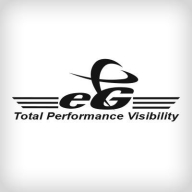

eG Enterprise and LogicMonitor compete in the IT monitoring category. LogicMonitor may have the upper hand due to its extensive features and flexible deployment across various environments.
Features: eG Enterprise offers comprehensive end-to-end monitoring with detailed visibility across the Citrix stack, robust application performance management, and quick deployment of monitoring tests. LogicMonitor provides robust dashboards and visualization, granular customization, and efficient performance analysis and monitoring across diverse environments.
Room for Improvement: eG Enterprise could improve the UI responsiveness, alarm display console, and expand its networking monitor capabilities. LogicMonitor could expand application performance management functionalities, enhance logging capabilities, and improve dashboards' customizability and user-friendliness.
Ease of Deployment and Customer Service: eG Enterprise is primarily on-premises which requires thorough deployment planning. It offers excellent customer service and responsive technical support. LogicMonitor supports hybrid and public cloud deployments and also provides strong customer support with effective monitoring deployment across various environments.
Pricing and ROI: eG Enterprise offers flexible licensing options such as subscription and perpetual models and is considered cost-effective in virtual desktop environments. LogicMonitor is priced at a premium due to its extensive feature set and offers a comprehensive solution that often reduces the need for other monitoring tools, resulting in significant ROI despite the competitive pricing.
| Product | Market Share (%) |
|---|---|
| LogicMonitor | 2.1% |
| eG Enterprise | 0.7% |
| Other | 97.2% |


| Company Size | Count |
|---|---|
| Small Business | 9 |
| Midsize Enterprise | 1 |
| Large Enterprise | 10 |
| Company Size | Count |
|---|---|
| Small Business | 10 |
| Midsize Enterprise | 9 |
| Large Enterprise | 8 |
eG Enterprise is a comprehensive performance monitoring tool that monitors applications, infrastructure, and networks. eG Enterprise offers a complete performance management solution that delivers diagnosis and automated IT auditing, and offers extensive reporting to test application latencies, storage hotspots, network failures, server incompetencies, bottlenecks, user experience (UX) concerns, and more.
eG Enterprise monitors an organization’s total IT ecosystem and applications throughout every layer and all tiers and will take a deep dive to discover where a problem began, faster than any other solution. eG Enterprise is a complete solution that thoroughly monitors the end-user relationship for just about every IT deployment available, such as cloud-based microservices applications, enterprise applications, on-premise monolithic applications, and digital workspaces.
eG Enterprise is a flexible solution and can be deployed in various circumstances, wherever the digital experience of the user needs to be managed and IT infrastructures and applications need to be monitored. eG Enterprise is effective from legacy on-premise deployments to the most cloud-centric ecosystem in the marketplace today.
eG Enterprise Features
Reviews from Real Users
“The product makes data collection easy. It's simple to set up. The algorithm is the most valuable aspect of the solution. In a few minutes after the installations, we can get insights from my technical environment. After a few minutes, I can get some valuable insights to make decisions.” - Anderson L., LatAm Presales Analyst at CLM
“Some of the best features of eG are, in terms of APM, they have complete modules between application performance monitoring, server monitoring, and even storage and network-based monitoring. The UI is also quite good. They have some standard AI-based capabilities, even though it's not quite as advanced when compared to Dynatrace. eG has some good, basic APM capabilities.” - A PeerSpot user who is a Consultant at a tech services company
LogicMonitor offers flexible IT monitoring with customizable dashboards and robust alerting capabilities. It integrates seamlessly with third-party apps like ServiceNow and provides a single-pane view for diverse IT environments, aiding in proactive issue resolution and enhancing operational efficiency.
LogicMonitor stands out with its capability to monitor diverse infrastructures including Cisco Voice systems, data centers, and virtual environments. Supporting servers, storage, networking devices, and applications, it provides seamless integration with cloud services like AWS and Azure. Users leverage its scalability and flexibility, benefiting from dynamic thresholds, anomaly detection, and detailed visualization. All these features contribute to improved management of IT assets and streamlined operations. Users suggest improvements in mapping, reporting, and automation for remediation, desiring more customizations and an expansive application performance monitoring toolset.
What are LogicMonitor's key features?LogicMonitor is widely implemented across industries, providing monitoring for infrastructure in sectors like telecommunications, cloud computing, and managed services. Managed service providers particularly value its ability to track client environments, deliver proactive alerts, and generate comprehensive reports, while its integration with cloud platforms like AWS and Azure offers users centralized management and visibility into IT assets worldwide.
We monitor all IT Infrastructure Monitoring reviews to prevent fraudulent reviews and keep review quality high. We do not post reviews by company employees or direct competitors. We validate each review for authenticity via cross-reference with LinkedIn, and personal follow-up with the reviewer when necessary.